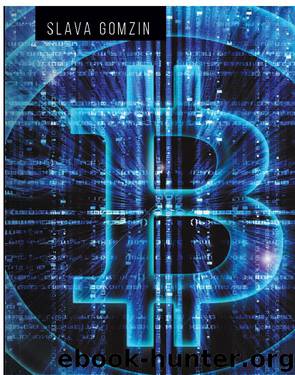Bitcoin for Nonmathematicians: by Slava Gomzin

Author:Slava Gomzin [Неизв.]
Language: eng
Format: epub
Publisher: Brown Walker Press
Part I Summary
Money and payments began from barter and commodities, which eventually inspired the creation of the first metal coins more than 2500 years ago. Since the creation of coins, invention of new tenders, such as paper money, bank checks, credit cards, mobile checkout, and online currencies, did not eliminate previous payment methods.
Digital gold currencies such as e-gold and e-Bullion were the first successful online payment systems that were backed by real gold. Ecash was the first electronic payment system based on cryptography.
There are two major groups of electronic payment systems: centralized and decentralized. E-gold, ecash, Liberty Reserve, PayPal, and Amazon Payments are all examples of centralized payment systems. However, e-gold and Liberty Reserve have been operated independently from traditional financial institutions. Bitcoin is the first decentralized payment system that also does not depend directly on banks, clearinghouses, or credit card networks.
The stories of e-gold, e-Bullion, and Liberty Reserve demonstrate that most attempts to create an independent, centralized e-money ecosystem that would be more than just an extension of traditional banking and credit card systems, but introduce a real alternative currency and protect user privacy, eventually have been executed and failed. Unlike centralized currencies, bitcoin cannot be destroyed simply by shutting down the group of Internet domains.
The principles of the bitcoin design, which are currently used by other cryptocurrencies, were first defined in a technical white paper published by Satoshi Nakamoto, a person (or a group of people) whose real identity is still unknown.
There are a few basic points of bitcoin design:
Provides a solution to the double-spending problem by processing the transaction through a peer-to-peer network and storing them in a publicly accessible blockchain
Decentralizes the “account” management, which protects transactions from DoS attacks and national governments
Gives bitcoin users limited anonymity, called pseudonymity
Download
This site does not store any files on its server. We only index and link to content provided by other sites. Please contact the content providers to delete copyright contents if any and email us, we'll remove relevant links or contents immediately.
Mastering Bitcoin: Programming the Open Blockchain by Andreas M. Antonopoulos(2885)
Dawn of the New Everything by Jaron Lanier(2683)
Blockchain: Ultimate Step By Step Guide To Understanding Blockchain Technology, Bitcoin Creation, and the future of Money (Novice to Expert) by Keizer Söze(2376)
Alibaba by Duncan Clark(1973)
Foundations of Blockchain by Koshik Raj(1888)
Owning Bitcoin: The Illustrated Guide to Security, Privacy, and Potential by Apodaca Richard(1887)
Significant Zero by Walt Williams(1880)
The Mastermind by Evan Ratliff(1822)
Mastering Blockchain by Imran Bashir(1777)
Bitcoin: The Basics of Blockchain and Investing in Cryptocurrency by K. Connors(1728)
Bitcoin: The Ultimate Guide to the World of Bitcoin, Bitcoin Mining, Bitcoin Investing, Blockchain Technology, Cryptocurrency (2nd Edition) by Ikuya Takashima(1608)
Attack of the 50 Foot Blockchain by David Gerard(1608)
The Bitcoin Standard: The Decentralized Alternative to Central Banking by Saifedean Ammous(1592)
Cryptocurrency by Neil Hoffman(1557)
Shaping the Fourth Industrial Revolution by Klaus Schwab & Nicholas Davis & Satya Nadella(1549)
Turing's Cathedral by George Dyson(1535)
Dawn of the New Everything: Encounters with Reality and Virtual Reality by Jaron Lanier(1535)
The Bitcoin Guidebook by Ian DeMartino(1515)
Bill Gates by Michael Becraft(1472)
